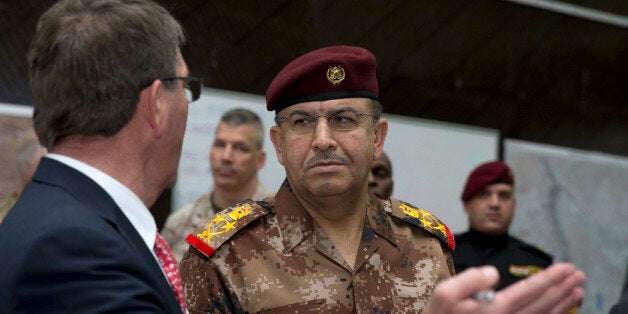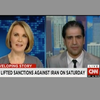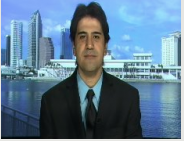
The number of Iranian fighters dying in Syria has reportedly risen in recent weeks. Iran's semi-official Fars News Agency reported that several members of the Iranian Revolutionary Guard Corps (IRGC) were among the fighters killed in the northern Syrian city of Aleppo over just a few days.
This indicates that Iran is increasingly relying on the deployment of IRGC members instead of the elite Quds Force. So far, more than 100 IRGC fighters including top generals have been killed in the Syrian war. It is the task of the Quds Force to conduct extraterritorial operations and foreign military missions. It has an estimated 15,000 fighters, while IRGC has over 100,000 members and it controls the paramilitary Basij militia with over 350,000 active members and reservists.
It follows that, after the nuclear deal, significant transformation in Iran's military is actively occurring, which suggests a manifestation of Iran's military empire across the region, more aggressive foreign policy and a reassertion of Tehran's regional supremacy.
While Iranian leaders project that they are fighting ISIS, Iranian forces are not anywhere close to an ISIS stranglehold. Instead, they appear to be battling Syrian rebel groups, including the Free Syrian Army, to force them to retreat or prevent them from capturing more territories in Aleppo, Latakia and Damascus. Iran is increasing its boots on the ground in those cities, fearing the fall of these strategic locations to the hands of opposition.
Domestic view of Iran's intervention
The popularity of Iran's role in Syria has been low among the Iranian educated middle class. Nima, an Iranian human rights activist from Shiraz, pointed out that "The government is finding ways to justify its increasing military budget, and IRGC and Basij recruitments for the wars in Syria and Iraq. This happening while Iranian people are facing economic difficulty and the unemployment rate has been increasing under Rowhani's presidency."
However, in the last few months, Iran has utilized ISIS, and events such as the Paris attacks, in order to justify its actions to the Iranian people and by inciting fear that if the Islamic Republic does not fight in Syria and Iraq, Sunni radical groups will overrun Tehran and Shiite communities.
The shift in Iran's official and semi-official media reports on Tehran's involvement in Syria comes as a surprise. Iranian media and officials used to characterize the IRGC and Quds Force involvement in Syria as solely advisory, involving tactical assistance, strategic planning and intelligence.
But in the last few weeks, there have been more reports of public funerals. Even the Supreme Leader, Ayatollah Ali Khamenei has become more public. He tweeted about the death of one of the Iranian fighters in Syria, posting a picture of himself with the "martyred" family expressing his condolences.
Tactical shift
There exist several reasons behind this tactical shift and the increasing deaths of Iranian fighters.
The setbacks that Assad's army and the Quds Force encountered in early 2015, mainly due to the rise of ISIS and the rebel groups' advancements, propelled Qassem Soleimani, head of the Quds Force, to visit Putin and ask for military help. The Islamic Republic pushed for Russia's military assistance and involvement in Syria.
Nevertheless, Russia's military superiority and interventions in Latakia did undermine Iran's influence in Syria. By resorting to public acknowledgments of Iranian fighters operating on the ground in Syria, Tehran needed to reassert its presence in Syria.
In addition, the increasing Russian airstrikes are coordinated with the rising deployment of IRGC fighters on the ground. This inevitably meant a rise in the Iranian casualties. Assad, on the other hand, has become increasingly dependent on Iran's Quds Force, the IRGC and Russia.
Furthermore, before the rise of ISIS, Iran played down its role in Syria because Tehran did not have a legitimate excuse to justify its presence there. Iranian leaders were also worried about direct confrontation with the West and other regional powers, and attempted to prevent the scuttling of nuclear negotiations. But after the nuclear deal was reached, after ISIS grabbed the global headlines, Khamenei's policy shifted.
Finally, the Islamic Republic seizes any opportunity to reassert its regional supremacy, and power, in the pursuit of hegemonic ambitions. By making it public that Iranian troops are present in Syria, Iran is claiming its crucial role in the conflict. Iran is also offering itself to the West as an indispensable regional player and partner in fighting extremists groups. As a result, the West would not have any viable option other than turning a blind eye to Iran's regional interventionist policies.
Although some policy analysts and scholars argue that the increasing death toll of Iranian fighters might change the Islamic Republic's calculation in supporting the Syrian army, it is less likely to witness any change in Iran's policy of backing Assad. Tehran's stakes in keeping Assad's in power are high. Iran can afford several more years, or even a decade, in assisting the Syrian army militarily, financially, strategically and with intelligence.
Dr. Majid Rafizadeh, an American scholar and political scientist, is the president of the International American Council on the Middle East. Harvard-educated, Rafizadeh serves on the advisory board of Harvard International Review. He is originally from Iran and Syria. You can contact him at Dr.rafizadeh@post.harvard.edu or follow him at @majidrafizadeh
This post first appeared on Al Arabiya.

